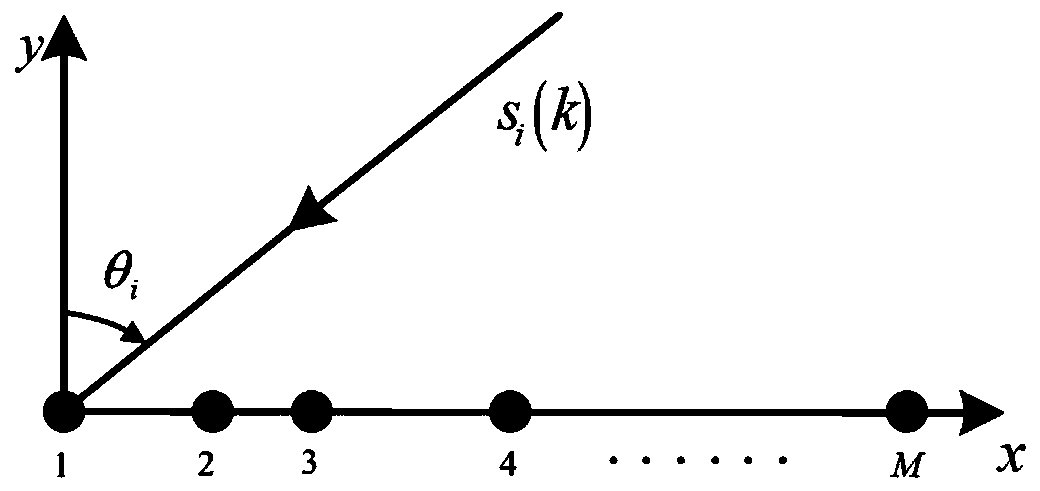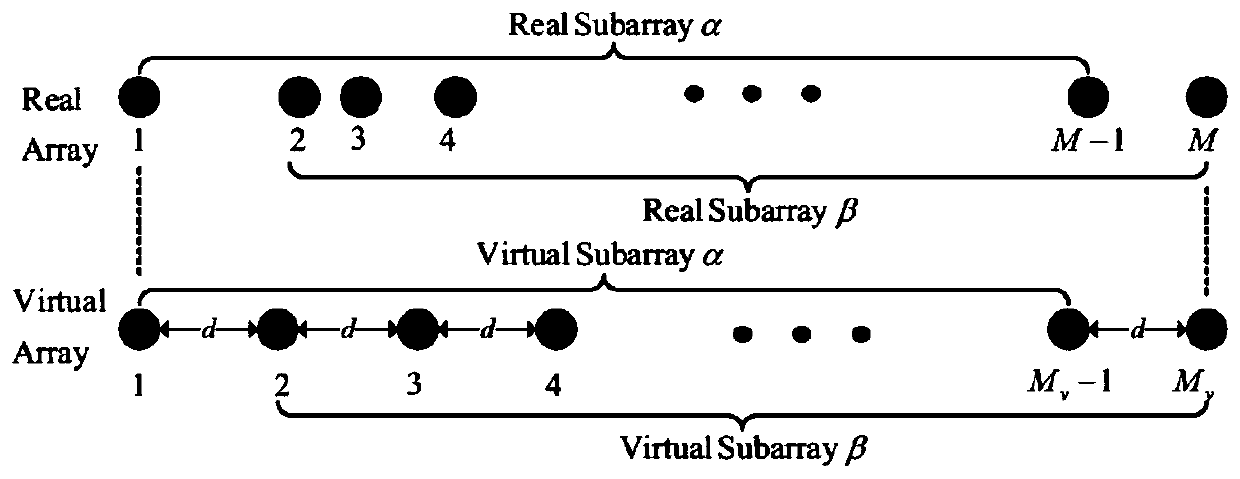Far-field coherent signal direction-of-arrival estimation method based on sub-space and interpolation transformation
A technology of direction of arrival estimation and coherent signals, applied in radio wave direction/deviation determination systems, direction finders using radio waves, complex mathematical operations, etc., can solve problems such as the difficulty of satisfying the ideal conditions of uniform linear array
- Summary
- Abstract
- Description
- Claims
- Application Information
AI Technical Summary
Problems solved by technology
Method used
Image
Examples
Embodiment Construction
[0065] The present invention will be described in detail below in conjunction with the accompanying drawings and embodiments.
[0066] To divide the subspace of the real array, use the interpolation transformation technology to transform any array into a virtual uniform line array through the interpolation matrix, so as to realize the promotion of the SUWWE algorithm; the far-field coherent signal is incident on the non-uniform line array p coherent narrowband signals The non-uniform linear array includes M omnidirectional sensor array elements, and the value range of M is M>p, and the angle is the orientation information of the incident signal, where θ i Indicates the direction of arrival angle of the i-th incident signal, which is the counterclockwise angle of the i-th incident signal with respect to the y-axis, such as figure 1 shown.
[0067] A method for estimating the direction of arrival of far-field coherent signals based on subspace and interpolation transformati...
PUM
 Login to View More
Login to View More Abstract
Description
Claims
Application Information
 Login to View More
Login to View More - R&D
- Intellectual Property
- Life Sciences
- Materials
- Tech Scout
- Unparalleled Data Quality
- Higher Quality Content
- 60% Fewer Hallucinations
Browse by: Latest US Patents, China's latest patents, Technical Efficacy Thesaurus, Application Domain, Technology Topic, Popular Technical Reports.
© 2025 PatSnap. All rights reserved.Legal|Privacy policy|Modern Slavery Act Transparency Statement|Sitemap|About US| Contact US: help@patsnap.com



